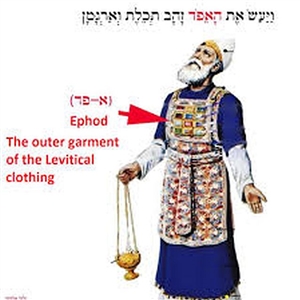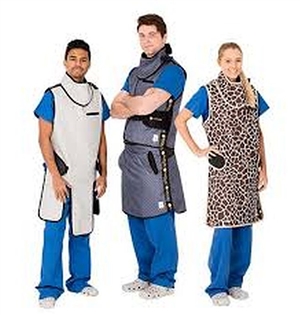The purpose of the Ephod
One of the most interesting stories of the Bible is the story of the Tabernacle. We begin seeing it in the book of Exodus and it keeps popping up in the Old Testament almost to the end. We know it was powered by an energy source which made the face of Moses shine at night. We know that later when accidents happened and people were exposed to the energies contained in the Tabernacle, they burned and died. On one such occasion when the Tabernacle was accidentally cracked and people nearby burned and died a lead candelabra was hammered into the crack and the device became safe again. It can, be presumed the core power source of the Tabernacle device was radioactive.Back in the 1920s the US Mason brotherhood realized the description of the Tabernacle's construction and it's use were those of a two way voice radio. Adjustment or tuning of the frequency was done by adjustment of the golden curtain threads. Whatever, today we will talk about the garments used by the Levite priests charged with maintaining the device for Moses.
Their garment is called an Ephod. The book of Exodus provides specifics as to the manufacture of the Ephod. Gold is used extensively in the manufacture of an Ephod. Gold is a very efficient shielding against radioactive materials. Today we use lead, but if you have it, Gold is just as good.
You will see below a picture of what we think an Ephod looked like and also a picture of a modern lead apron as used by technicians who work around radio-actives.
Modern technicians working around radioactivity wear devices called dosimeters to measure the amount of radiation they are exposed to. Exodus 28 describes a breast plate of gem stones used by the early Levite priests. Specific gemstones and minerals are described and to be placed in a specific order upon the breast piece.
For the first two thousand years of Christianity an unusual feature of these gem stones was not known.
Specifically, each of the stones reacts in a visually noticeable fashion to the presence of radioactivity. Further the amount of reaction varies as the intensity of the radiation exposure changes.
Exodus 28:17 - 20
And thou shalt set in it settings of stones, even four rows of stones: the first row shall be a sardius, a topaz, and a carbuncle: this shall be the first row. And the second row shall be an emerald, a sapphire, and a diamond. And the third row a ligure, an agate, and an amethyst. And the fourth row a beryl, and an onyx, and a jasper: they shall be set in gold in their inclosings.
Here is some of what we know about some of those stones today and how they behave in the presence of increasing amounts of radioactivity.
Topaz - Turns blue, then brown as the radiation exposure intensifies
Emerald - Turns deep green, but under fast neutron bombardment it turns clear.
Sapphire - Turns gold colored with a significant decrease in electrical resistance.
Diamond - Becomes yellow then green in color.
Agate - Turns magnetic and glows blue in the dark
Beryl - Turns golden yellow.
Onyx - Glows brightly after exposure to strong radiation sources.
There are 12 different gemstones used in a Levite priest's breastplate. I have not googled the effects of radiation on all of them, but from the 7 I name above it is obvious the priest's breastplate made a very simple, yet amazingly accurate and sophisticated multi colored dosimeter capable of revealing with just a quick glance how 'hot' an environment the wearer had been exposed to.. <It is worth noting that Turkish and Brazilian Onyx stones are used today in fashioning some forms of modern high exposure dosimeter devices.>
Knowledge of how the Tabernacle worked, and why the Levite priests dressed as they did and what they did was shared only by a few.
Ephod
Modern Radiation worker's uniform



Comments (1)